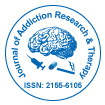Nuestro grupo organiza más de 3000 Series de conferencias Eventos cada año en EE. UU., Europa y América. Asia con el apoyo de 1.000 sociedades científicas más y publica más de 700 Acceso abierto Revistas que contienen más de 50.000 personalidades eminentes, científicos de renombre como miembros del consejo editorial.
Revistas de acceso abierto que ganan más lectores y citas
700 revistas y 15 000 000 de lectores Cada revista obtiene más de 25 000 lectores
Indexado en
- Índice de fuentes CAS (CASSI)
- Índice Copérnico
- Google Académico
- sherpa romeo
- Abrir puerta J
- Revista GenámicaBuscar
- Claves Académicas
- TOC de revistas
- SeguridadIluminado
- Infraestructura Nacional del Conocimiento de China (CNKI)
- Biblioteca de revistas electrónicas
- Búsqueda de referencia
- Universidad Hamdard
- EBSCO AZ
- OCLC-WorldCat
- Catálogo en línea SWB
- Biblioteca Virtual de Biología (vifabio)
- publones
- Fundación de Ginebra para la educación y la investigación médicas
- Pub Europeo
- ICMJE
Enlaces útiles
Revistas de acceso abierto
Comparte esta página
Abstracto
Children Born to Heroin-Addicted Mothers: What's the Outcome 25 Years Later?
Gemma Sanjuan Herranz, Maria angeles Lopez Vílchez, Josefa Díaz Ledo and Antonio Mur Sierra
Objective: The aim of this descriptive cross-sectional study is to show the long term evolution of children born to heroin-addicted mothers, focusing on social development, psychiatric disorders and substance abuse disorders.
Methods: 30 subjects born to heroin-addicted mothers between 1985 and 1990 were cited to complete an interview with 101 questions about their socioeconomic environment and social development, mental health and drug consumption. It was performed a descriptive analysis of the sample and the variables were compared using contingency tables and the Fisher’s exact test.
Results: We noted a high percentage of parental abandonment (56.2% of subjects lost one or both parents, 44.4% of subjects lived in extended care and 23.3% who were adopted or lived in shelter centers), and a high rate (26%) of emotional or physical abuse in childhood. Regarding socioeconomic development, most subjects were classified as having a medium or high socioeconomic level (80%), however social problems, which were measured as arrestments or imprisonment, were frequent. One third of the subjects had been diagnosed with some psychiatric disorder in childhood, most of them presented attention deficit disorder and hyperactivity and major depression, and we also found a 66.7% of subjects susceptible to have personality disorders. Drug consumption was very high across the sample; 70% of subjects had consumed cannabis in the previous year, 30% of people consumed cocaine in the last 12 months, 20% amphetamine, 13.3% of them had consumed ecstasy, 13.3% used hallucinogens and 2 people referred consumption of heroine. The use of alcohol also seemed to be high, as 5 people were classified as hazardous drinkers.
Conclusion: Subjects born to heroin-addicted mothers may be at risk of having social problems, psychiatric problems and illicit substance use disorders, therefore they could therefore benefit from close monitoring after birth to minimize and control the risks.
Revistas por tema
- Agricultura y acuicultura
- Alimentación y Nutrición
- Bioinformática y biología de sistemas
- Bioquímica
- Ciencia de los Materiales
- Ciencia general
- Ciencias Ambientales
- Ciencias Clínicas
- Ciencias farmacéuticas
- Ciencias Médicas
- Ciencias Sociales y Políticas
- Ciencias Veterinarias
- Enfermería y atención sanitaria
- Física
- Genética y biología molecular
- Geología y Ciencias de la Tierra
- Ingeniería
- Inmunología y Microbiología
- Química
Revistas clínicas y médicas
- Anestesiología
- Biología Molecular
- Cardiología
- Cirugía
- Cuidado de la salud
- Dermatología
- Diabetes y Endocrinología
- Enfermedades infecciosas
- Enfermería
- Gastroenterología
- Genética
- Inmunología
- Investigación clínica
- Medicamento
- Microbiología
- Neurología
- Odontología
- Oftalmología
- Oncología
- Pediatría
- Toxicología

 English
English  Chinese
Chinese  Russian
Russian  German
German  French
French  Japanese
Japanese  Portuguese
Portuguese  Hindi
Hindi